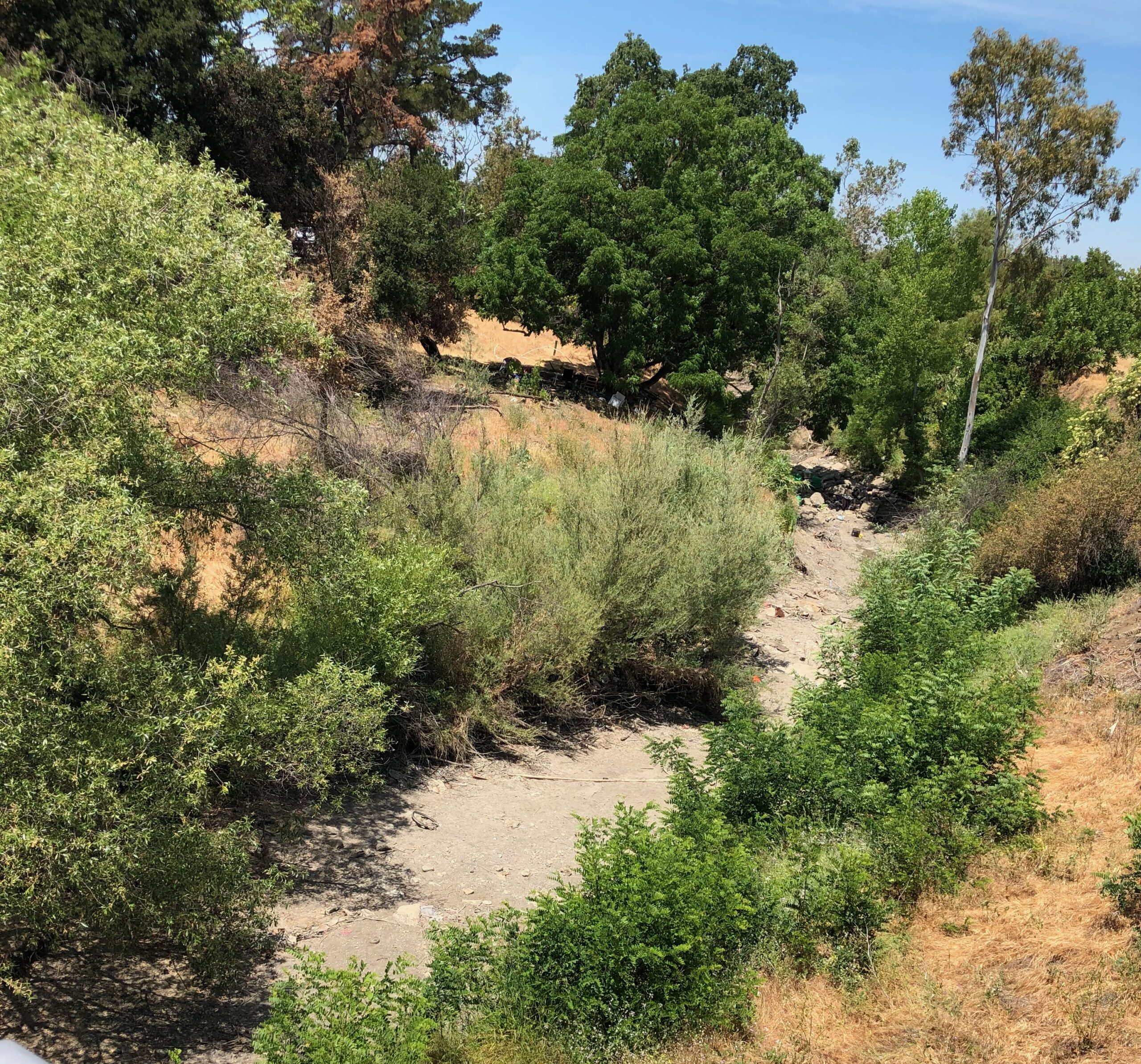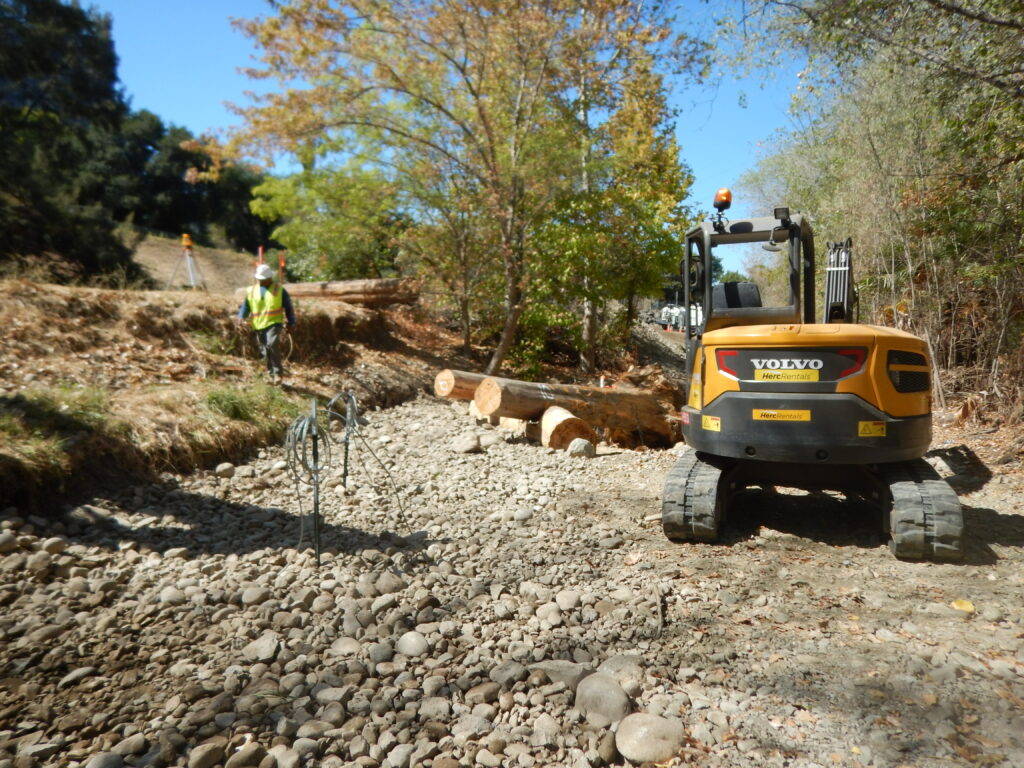
Two decades after the South Bay’s main water supplier agreed to restore aquatic habitat in the streams that flow from its reservoirs, fish in the region remain in dire straits, and local river advocates say it’s the Santa Clara Valley Water District’s fault. The agency, which serves the taps and toilets of 1.9 million Santa Clara County residents, has made some improvements on fish habitat along miles of stream and increased the amount of water it releases from its reservoirs. Yet Chinook salmon and steelhead in Coyote Creek, Stevens Creek, and the Guadalupe River remain about as scarce as ever.
Several environmental organizations want Valley Water to do more, and last month one of them, San Francisco Baykeeper, sued the district, alleging it was neglecting its responsibilities to protect public-trust resources. Baykeeper accuses Valley Water of violating state laws and the California Constitution while making feeble effort to help restore ailing species. At the heart of the suit, filed September 27, is water: not enough, Baykeeper argues, is being allowed out of the district’s reservoirs to support healthy fish numbers, which state law requires that dam owners do.
“Once you build a dam, you’re responsible,” says Ben Eichenberg, an attorney with San Francisco Baykeeper. “The law says you have to keep the fish in good condition.”
The fish populations in the South Bay’s watersheds are unquestionably in poor condition, but Valley Water biologists say that’s no fault of their agency. The district, they argue, has completed more than 20 projects to facilitate fish migration and spawning throughout the county in the past two decades, and has collaborated with a collection of organizations and agencies on improving stream flow conditions for migratory fish.
While Baykeeper’s lawsuit demands that Valley Water “increase releases of freshwater flows to provide habitat connectivity that is unavailable under the current flow regime,” the water district’s staff say they’re already releasing flows described in the “Fish and Aquatic Habitat Collaborative Effort,” which Valley Water produced with a handful of agencies and environmental groups in 1997. The FAHCE plan outlined a variety of needed habitat-improvement measures that would ostensibly help disappearing fish species.
“Valley Water has been implementing the FAHCE … on Stevens Creek and Guadalupe Creek for the past two years,” Valley Water’s John Bourgeois wrote in an August 25 letter to Baykeeper, shortly after the environmental group threatened to sue. He noted that because of drought-related supply issues, “Valley Water has been able to release only a few … pulse flows for fish during this two-year period.”
But much restoration work that Valley Water has committed to completing remains undone. While the district has proposed spending $126 million on habitat-improvement projects, it could be decades before major stream revisions are completed.
“They’re just dragging this out indefinitely,” Eichenberg says. “They’ve already had 20 years to do this. It shouldn’t take 40.”

Valley Water’s biologists say they have been hard at work to restore Chinook and steelhead habitat for the past 20 years. The district is also collaborating with the National Marine Fisheries Service, California Department of Fish and Wildlife, and U.S. Fish and Wildlife Service to improve available flows for salmon and steelhead while preserving enough reservoir water to maintain supplies for people. Recharging groundwater basins is another responsibility weighing on the district, Bourgeois says.
He says the whims of nature are making the district’s job difficult. Creeks run dry during periods of extended drought, which challenges the agency to meet its responsibilities.
“We have multiple objectives at Valley Water,” Bourgeois says. “We have flood risk management to take into account, we’ve got water supply for the two million residents of Silicon Valley, and we’ve got sensitive aquatic habitats.”
The current regulatory fight stems back more than a quarter century. In 1996, the Guadalupe-Coyote Resource Conservation District filed a complaint against the State Water Resources Control Board and Valley Water to contest the district’s management of Stevens Creek, Coyote Creek, Guadalupe River, and their tributaries. The complaint alleged that Valley Water had, since initiating its operations in 1928, degraded fish habitat and violated Fish and Game laws and the public trust. The FAHCE plan was produced the following year. Six years after that, Valley Water codified the FAHCE measures in another document, the 2003 “settlement agreement”—what Valley Water’s website calls “a roadmap for resolving water rights complaints and for improving habitat conditions for fish in the three watershed areas.” In 2021, Valley Water produced a draft Environmental Impact Report outlining implementation of the remaining settlement agreement measures.
What concerns Eichenberg, among others, is how the draft EIR, 18 years after the settlement agreement, proposes to reset the clock on the timeline for fish recovery. It describes a decades-long, phase-by-phase plan “to support fish passage, spawning and rearing habitat, and hydrological enhancements.”
“Phase 1 would be implemented over a 10-year term …” the report reads. “If program objectives are not being met, Valley Water would implement Phase 2 for a 10-year period, potentially followed by Phase 3. If during the 10-year program evaluation Valley Water determines that program objectives are not being met, they would transition to Phase 4.”
Patrick Samuel, the Bay Area director of California Trout—one of the groups that initialed the settlement agreement in 2003—says the draft EIR was released more than six years later than he and others had expected. It was also, he says, “pretty disappointing.” For one thing, Samuel says, the draft report failed to describe any population-recovery targets for migratory fish species.
“We were shocked that more had not been done to link stream flows to habitat-restoration opportunities so we could determine whether Valley Water’s proposal would provide enough habitat to support fish in good condition,” he says. Samuel also says the document pushes into the future watershed restoration actions that should already be completed.
“We anticipated the agreement would go into effect in 2005 and that all Phase 1 measures would be completed in the first 10 years,” he says. “There’s a whole host of things that were supposed to have been done basically right away that still have not been done.”
Whether the South Bay’s imperiled fish species can last much longer isn’t clear. A 2017 study from San Jose State University professor Jerry Smith even concluded that seagoing steelhead might already have been extirpated from Coyote Creek and its tributaries during a five-year spell of inadequate flow conditions resulting from drought and reduced reservoir releases. In a summary of the findings, Smith, now retired, wrote that Valley Water’s reservoir management led to numerous periods when the water in the creek was either too scant or too warm to support steelhead migration and rearing.
Lisa Porcella, an environmental services manager at Valley Water, disputes the theory that steelhead have vanished, explaining that these seagoing fish are well adapted to survive droughts. Genetically identical to rainbow trout, steelhead can reside in freshwater for years if passage to saltwater has been lost due to drought or diversions. That, Porcella says, is what steelhead have done in the South Bay.
“These fish populations, while they may not be thriving due to drought conditions, they’re hanging on, and they’re hanging on because of the diverse life history,” she says.
Chinook numbers have also reportedly crashed in the Guadalupe River, though baseline population levels are unknown. Research published last year in the journal PLoS ONE identified Chinook salmon bones from an ancient Native American village in the Guadalupe River valley, and a 1904 newspaper account refers to San Jose locals fishing for salmon in the stream. As late as the 1990s the fish reportedly returned to spawn in large numbers. Roger Castillo, a lifelong San Jose resident and naturalist who has spent countless hours observing and filming local watersheds, says he counted “thousands” of adult Chinook in the Guadalupe River in 1994 and again in 1996. The fish, he says, were congregated in lower estuary waters as well as deep upstream pools.
“I saw them with my own eyes,” says Castillo, an associate director of the Guadalupe-Coyote Resource Conservation District, which withdrew from the FAHCE agreement in 2020 partially due to the slow pace of implementation.
Porcella, however, says “there is no documented credible scientific evidence to support” claims that the South Bay ever supported abundant Chinook runs. Both camps agree that the fish today are scarce.
Eichenberg commends Valley Water’s staff and field crews for improving structural habitat throughout the watersheds, but says such work will be ineffective without additional water. “If you walk these creeks, you’ll find these really nice gravel beds and woody debris that’s been artfully arranged, and it’s all a foot above the waterline,” he says.
Rick Lanman, who led the PLoS ONE study and is president of the Institute for Historical Ecology in Los Altos, recognizes the work Valley Water has been doing but thinks the projects completed to date are too few and far between to make a positive dent in ecosystem function. “They’ve done a patchwork of good things,” he says, “but that hasn’t made any single watershed more viable.”

Valley Water biologists say their restoration efforts have made miles of habitat accessible again—but what caused local fish declines in the first place is a source of contention. Water district staff direct the blame toward climate change and drought, which have limited the amount of water available for streams and rivers. Others, though, blame Valley Water. Baykeeper alleges that the water supplier has violated California’s Fish and Game Code, which prohibits owners of any dam in the state from harming fish downstream. Specifically, code 5937 states that “[t]he owner of any dam shall allow sufficient water at all times to pass through a fishway, or in the absence of a fishway, allow sufficient water to pass over, around, or through the dam to keep in good condition any fish that may be planted or exist below the dam.”
Fluctuations in local salmon numbers could also be due to the changing overall abundance of the species on the West Coast. Isotopic and DNA analyses of South Bay Chinook tissue samples have confirmed that the fish that swim up the Guadalupe River are primarily—but not entirely—born in Central Valley fish hatcheries. Because many of these fish are trucked to saltwater for release and thereby deprived of the olfactory homing system that leads most wild salmon back to their natal streams, the fish often stray into other rivers and creeks—like those of the South Bay.
Holmes believes the decline of Chinook through much of their West Coast range makes it imperative to protect any watershed where the fish are taking refuge, whether or not they are native. And Lanman agrees that the South Bay’s creeks could be vital to the species’ future. “We really need to protect Chinook at the southern end of their range,” he says. In warmer, drier watersheds, he explains, natural selection may create drought-tolerant genetics that could prove valuable to the species’ adaptation as salmonids are squeezed northward by warming.
Holmes is hopeful that improved river conditions will allow Chinook from other regions to naturally recolonize South Bay watersheds. With the goal of rebuilding South Bay Chinook and steelhead runs, his group has removed more than a million pounds of trash from local watersheds in the past decade, and next year they plan to add gravel and woody debris to a section of Los Gatos Creek to help spawning fish.
Samuel, at California Trout, feels the South Bay has a unique opportunity to set a precedent for fish recovery in urban watersheds. You used to be able to walk to a Sharks game and look down at the water and see Chinook salmon spawning in the heart of downtown—that’s unbelievable, but it was real,” he says. “I think the opportunity for recovery is huge, but if we can’t do it in Silicon Valley, in the heart of innovation, where can we do it?”
Top image: Guadalupe River at Foxworthy Boulevard overpass, May2021. Photo: Baykeeper